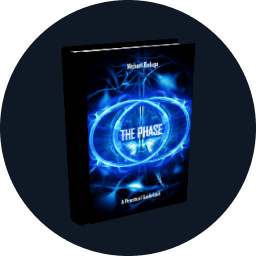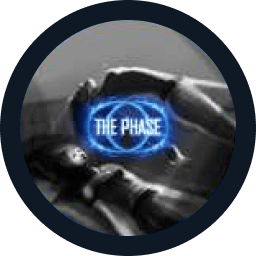The question “Why do we have lucid dreams?” is becoming increasingly relevant as more and more people are becoming interested in this state. The phenomenon of the Phase was first proven in 1975 in England by research conducted at the University of Hull by a group of scientists led by Keith Hearne. An interesting experiment was carried out during which an experienced practitioner performed assigned and planned eye movements while instruments recorded his sleep. He proved that he could control his pupils despite being asleep. Subsequently, similar experiments were conducted to confirm this theory.

Studies conducted in 2008 demonstrate a 40-Hz difference between REM sleep and wakefulness. This means that in a lucid dream, a person is in a state between wakefulness and REM sleep—approximately in the middle. During the period of lucid dreaming (LD), the most active parts of the brain are those responsible for consciousness. By the way, these are also the precise brain regions that distinguish a rational human from a primate.
The REM sleep phase, especially LD itself, hasn’t been fully studied yet. Scientists don’t understand exactly what processes occur, how they arise, or how they’re initiated. However, each year, more scientific and factual information is gained, and the overall understanding of LD is gradually improving.
One theory suggests that lucid dreams are the next stage of human evolution. That is, we have evolved physically, and now it’s time for our consciousness to evolve. There’s a high probability that future humans will be able to exist simultaneously in two worlds—the LD world and the world of wakefulness—and both states will be considered normal.
Unfortunately, an opposing theory claims that humans previously had the ability to live in both worlds simultaneously and are gradually losing it. Support for this theory is provided by the fact that infants, who only have genetic memory, enter the LD world very easily but lose this skill as they age and become ordinary people.
Why do people lucid dream?
In esotericism, special attention is given to lucid dreams. Even though esoteric teachings have nothing to do with science, they share commonalities with scientific principles—for example, the possibility of obtaining information. An experienced practitioner understands where a lucid dream is and where wakefulness is, and he can attempt to obtain information in the first state that’s inaccessible in the second. But what should be done by a realist—a person accustomed to trusting only proven facts? He can’t believe an esoteric who talks about something mystical. Instead, he simply needs to approach the question from a scientific point of view.
What’s the state of the brain during a lucid dream?
The Phase is an unusual brain state, in which the use of all brain functions is maximized, which influences our perception of things. For example, if a person is in a lucid dream and wants to move to a clean, empty beach, he can do so literally in an instant. Such phenomena have been proven, but it is unknown exactly what processes occur that allow the brain to change images in a second.
Realism of spaces
What is an ocean shore in a lucid dream? It’s a scene built in seconds and characterized by impeccable realism. Every grain of sand, blade of grass, and even the crabs wandering along the coast are detailed. To create a complete image, the brain adds characteristic sounds, like the splash of waves. Even if you’re seeing the ocean shore for the first time, your brain will model the environment with high accuracy. Moreover, most people who know they’re in a dream become so amazed by the realism that they doubt whether they are dreaming. This applies not only to beginners—experienced practitioners also often wonder whether they’re in a lucid dream or the real world.
Mechanisms of movement in a lucid dream
Imagine that, after entering a lucid dream and being transported to the ocean shore, you notice some movement, perhaps the movement of waves. This is also accompanied by realistic details: foam appears, and the sand and seashells on the shore move in full accordance with the laws of physics. Then a wind blows, lifting and moving hundreds of grains of sand. The grass begins to sway, and the leaves on a nearby palm tree flutter. Our brain is capable not only of changing the space in a lucid dream as we desire but also of adding maximum details to this space. Creating such a realistic illusion requires enormous computational power.
What happens to the subconscious during a lucid dream?
According to one of the most popular theories, our subconscious is activated during lucid dreams and is responsible for control, plot formation, and so on. There’s a high probability that the subconscious also provides us with signals during wakefulness, which are created after it has analyzed general information. But the problem is that we don’t notice such signals during wakefulness. However, in sleep, we interact with the subconscious directly, and it sends us images, controls the environment, and creates dream plots. This interaction might explain why we lucid dream.
Where does the information gained in lucid dreams come from?
There’s no evidence that a person can receive information from external sources while sleeping. However, this often isn’t required since an immeasurably large amount of data is stored in the subconscious, and we gain unhindered access to this data when we sleep. Simply realizing this potential is enough to motivate many people to practice LD and explore the possibilities it offers.
How do we receive information?
What is a lucid dream in which we interact with information called? It’s a phase state in which a person can employ methods to influence their perception. There’s an opinion that our subconscious stores all the data we’ve accumulated over our entire lifetime, starting from birth, and that this data is used to create the realistic illusions and images we see in our dreams.
Limitations
The information you can obtain from a dream is limited by your knowledge. If a certain piece of information has never entered your brain, your subconscious can’t extract it. This holds for the smallest of streets and the highest of peaks. However, even if you’ve never visited a place, you can still see it in a dream if you have knowledge of it. For example, even if you’ve never been to the Eiffel Tower, your brain has received knowledge about it from photos and information about it online or in newspapers. Your brain can use this information to create a hyper-realistic illusion of the Eiffel Tower in a dream.
Recommended Books on Lucid Dreaming
Recommended reading
Attacks and aggression from lucid dream objects
Does lucid dreaming feel real – Basic properties of space
Robert Monroe: “Journeys Out of the Body” and Lucid Dreaming








